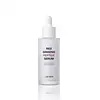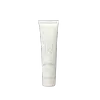What's inside
What's inside
 Key Ingredients
Key Ingredients

 Benefits
Benefits

 Concerns
Concerns

 Ingredients Side-by-side
Ingredients Side-by-side

Water
Skin ConditioningGlycerin
HumectantPanax Ginseng Root Water
MaskingPropanediol
SolventButylene Glycol
Humectant1,2-Hexanediol
Skin ConditioningMethyl Gluceth-20
HumectantPanthenol
Skin ConditioningButyrospermum Parkii Butter
Skin ConditioningCaprylic/Capric Triglyceride
MaskingOlea Europaea Fruit Oil
MaskingHydrogenated Lecithin
EmulsifyingSqualane
EmollientPoncirus Trifoliata Fruit Extract
Skin ConditioningPanax Ginseng Root Extract
EmollientAdenosine
Skin ConditioningGlyceryl Acrylate/Acrylic Acid Copolymer
HumectantPolyglyceryl-10 Laurate
Skin ConditioningDisodium EDTA
Phenyl Trimethicone
Skin ConditioningPentaerythrityl Tetraisostearate
EmollientPolyglycerin-3
HumectantCetyl Ethylhexanoate
EmollientCeramide NP
Skin ConditioningCholesterol
EmollientPolyglyceryl-10 Myristate
Skin ConditioningPhytosphingosine
Skin ConditioningGlyceryl Stearate
EmollientCentella Asiatica Extract
CleansingPortulaca Oleracea Extract
Skin ConditioningSodium Stearoyl Glutamate
CleansingTromethamine
BufferingSodium Polyacrylate
AbsorbentCarbomer
Emulsion StabilisingAcrylates/C10-30 Alkyl Acrylate Crosspolymer
Emulsion StabilisingChamomilla Recutita Flower Extract
MaskingVitex Agnus Castus Extract
AstringentAcetyl Hexapeptide-8
HumectantEthylhexylglycerin
Skin ConditioningPistacia Lentiscus Gum
MaskingParfum
MaskingWater, Glycerin, Panax Ginseng Root Water, Propanediol, Butylene Glycol, 1,2-Hexanediol, Methyl Gluceth-20, Panthenol, Butyrospermum Parkii Butter, Caprylic/Capric Triglyceride, Olea Europaea Fruit Oil, Hydrogenated Lecithin, Squalane, Poncirus Trifoliata Fruit Extract, Panax Ginseng Root Extract, Adenosine, Glyceryl Acrylate/Acrylic Acid Copolymer, Polyglyceryl-10 Laurate, Disodium EDTA, Phenyl Trimethicone, Pentaerythrityl Tetraisostearate, Polyglycerin-3, Cetyl Ethylhexanoate, Ceramide NP, Cholesterol, Polyglyceryl-10 Myristate, Phytosphingosine, Glyceryl Stearate, Centella Asiatica Extract, Portulaca Oleracea Extract, Sodium Stearoyl Glutamate, Tromethamine, Sodium Polyacrylate, Carbomer, Acrylates/C10-30 Alkyl Acrylate Crosspolymer, Chamomilla Recutita Flower Extract, Vitex Agnus Castus Extract, Acetyl Hexapeptide-8, Ethylhexylglycerin, Pistacia Lentiscus Gum, Parfum
Water
Skin ConditioningGlycerin
HumectantSqualane
EmollientCaprylic/Capric Triglyceride
MaskingCoconut Alkanes
EmollientGlyceryl Stearate
EmollientMeadowfoam Estolide
Skin ConditioningPEG-100 Stearate
Cetearyl Alcohol
EmollientC12-15 Alkyl Benzoate
AntimicrobialPhytosteryl Macadamiate
Skin ConditioningTriheptanoin
Skin ConditioningCoco-Caprylate/Caprate
EmollientMethylpropanediol
SolventLinoleic Acid
CleansingPhospholipids
Skin ConditioningPhytosterols
Skin ConditioningSodium Polyacrylate
AbsorbentTribehenin
EmollientCaprylyl Glycol
EmollientPhenoxyethanol
PreservativeDipalmitoyl Hydroxyproline
Skin ConditioningSodium PCA
HumectantUrea
BufferingDilinoleic Acid/Butanediol Copolymer
Hydroxyproline Palmitamide
Skin ConditioningHydroxyethyl Acrylate/Sodium Acryloyldimethyl Taurate Copolymer
Emulsion StabilisingIsohexadecane
EmollientCeramide Ng
Skin ConditioningTrehalose
HumectantSodium Phytate
PEG-10 Phytosterol
EmulsifyingHexylene Glycol
EmulsifyingPolysorbate 60
EmulsifyingPalmitic Acid
EmollientLactic Acid
BufferingPolyquaternium-51
Skin ConditioningTocopherol
AntioxidantTriacetin
AntimicrobialCastor Oil/Ipdi Copolymer
Sorbitan Isostearate
EmulsifyingSodium Hyaluronate
HumectantPalmitoyl Hexapeptide-12
Skin ConditioningWater, Glycerin, Squalane, Caprylic/Capric Triglyceride, Coconut Alkanes, Glyceryl Stearate, Meadowfoam Estolide, PEG-100 Stearate, Cetearyl Alcohol, C12-15 Alkyl Benzoate, Phytosteryl Macadamiate, Triheptanoin, Coco-Caprylate/Caprate, Methylpropanediol, Linoleic Acid, Phospholipids, Phytosterols, Sodium Polyacrylate, Tribehenin, Caprylyl Glycol, Phenoxyethanol, Dipalmitoyl Hydroxyproline, Sodium PCA, Urea, Dilinoleic Acid/Butanediol Copolymer, Hydroxyproline Palmitamide, Hydroxyethyl Acrylate/Sodium Acryloyldimethyl Taurate Copolymer, Isohexadecane, Ceramide Ng, Trehalose, Sodium Phytate, PEG-10 Phytosterol, Hexylene Glycol, Polysorbate 60, Palmitic Acid, Lactic Acid, Polyquaternium-51, Tocopherol, Triacetin, Castor Oil/Ipdi Copolymer, Sorbitan Isostearate, Sodium Hyaluronate, Palmitoyl Hexapeptide-12
 Reviews
Reviews

Ingredients Explained
These ingredients are found in both products.
Ingredients higher up in an ingredient list are typically present in a larger amount.
This ingredient is an emollient, solvent, and texture enhancer. It is considered a skin-softener by helping the skin prevent moisture loss.
It helps thicken a product's formula and makes it easier to spread by dissolving clumping compounds.
Caprylic Triglyceride is made by combining glycerin with coconut oil, forming a clear liquid.
While there is an assumption Caprylic Triglyceride can clog pores due to it being derived from coconut oil, there is no research supporting this.
Learn more about Caprylic/Capric TriglycerideGlycerin is already naturally found in your skin. It helps moisturize and protect your skin.
A study from 2016 found glycerin to be more effective as a humectant than AHAs and hyaluronic acid.
As a humectant, it helps the skin stay hydrated by pulling moisture to your skin. The low molecular weight of glycerin allows it to pull moisture into the deeper layers of your skin.
Hydrated skin improves your skin barrier; Your skin barrier helps protect against irritants and bacteria.
Glycerin has also been found to have antimicrobial and antiviral properties. Due to these properties, glycerin is often used in wound and burn treatments.
In cosmetics, glycerin is usually derived from plants such as soybean or palm. However, it can also be sourced from animals, such as tallow or animal fat.
This ingredient is organic, colorless, odorless, and non-toxic.
Glycerin is the name for this ingredient in American English. British English uses Glycerol/Glycerine.
Learn more about GlycerinGlyceryl Stearate is a mix of glycerin and stearic acid.
It is used to stabilize the mixing of water and oil ingredients. By preventing these ingredients from separating, it can help elongate shelf life. It can also help thicken the product's texture.
As an emollient, it helps soften skin and supports barrier-replenishing ingredients.
In cosmetics, Glyceryl Stearate is often made from vegetable oils or synthetically produced.
This ingredient may not be fungal-acne safe
Fun fact: The human body also creates Glyceryl Stearate naturally.
Learn more about Glyceryl StearateSodium Polyacrylate is the sodium salt of polyacrylic acid. It is used as an absorber, emollient, and stabilizer.
This ingredient is a super-absorbent polymer - meaning it can absorb 100 to 1000 times its mass in water. As an emollient, Sodium Polyacrylate helps soften and soothe skin. Emollients work by creating a barrier to trap moisture in. This helps keep your skin hydrated.
Squalane is an emollient that helps the skin hold onto moisture. It's an oily liquid that occurs naturally in certain types of fish and plant oils.
Because squalane boosts hydration in the skin, it also comes with plenty of benefits: it is an antioxidant and can help fight free radicals and skin damage. Squalane is also found to have a detoxifying effect when applied.
Squalane comes from squalene, which occurs naturally within the sebum of our skin. It is one of the oils our skin produces to keep itself hydrated. Squalane is the hydrogenated version of squalene and has a longer shelf life.
Research shows that squalane is non-irritating (even at 100% concentration).
In general, it's a fantastic ingredient. It does a great job at hydrating the skin, and it's suitable for those with sensitive skin.
The source of squalane may impact malassezia / fungal acne. This is because olive oil derived squalane can contain impurities such as fatty acids and plant waxes. Sugarcane derived squalane is recommended for anyone with malassezia concerns.
Is squalane vegan?
This depends on the source. Squalane can be derived from both plants and animals. Most squalane used in skincare comes from plants.
Please note: the source of squalane is only known if disclosed by the brand. We recommend reaching out to the brand if you have any questions about their squalane.
Read more about squalene with an "e".
Is squalane an oil?
Squalane is often called an oil, but it’s technically not; it’s a hydrocarbon, meaning it’s only made of carbon and hydrogen, unlike true oils which are triglycerides made of fatty acids and glycerol.
The term “oil-free” isn’t regulated, so companies can define it however they want. Some exclude all oils, while others just avoid mineral oil or comedogenic oils.
While some people avoid oils thinking they cause breakouts, the right kind of oil (or oil-like ingredient like squalane) can actually help balance and hydrate your skin. It’s worth testing out simple oils or squalane to see what works best for your skin.
Learn more about SqualaneWater. It's the most common cosmetic ingredient of all. You'll usually see it at the top of ingredient lists, meaning that it makes up the largest part of the product.
So why is it so popular? Water most often acts as a solvent - this means that it helps dissolve other ingredients into the formulation.
You'll also recognize water as that liquid we all need to stay alive. If you see this, drink a glass of water. Stay hydrated!
Learn more about Water